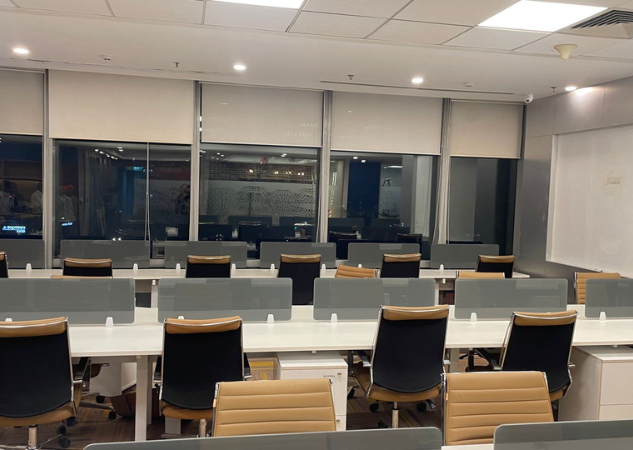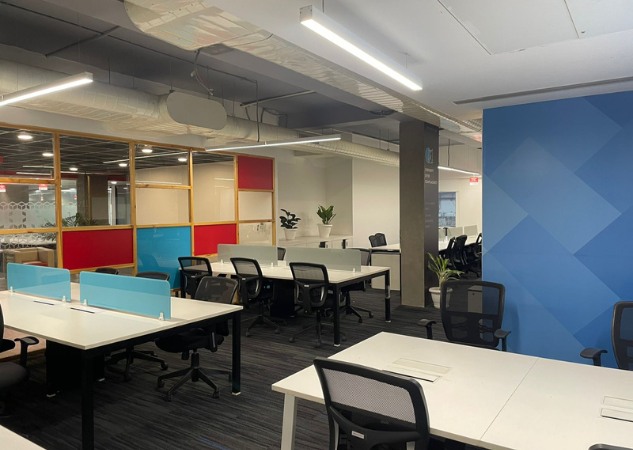When blamed unfairly at work, stay calm and act wisely. Learn 10 smart ways to handle such tricky situations.
💡 Are you looking for Coworking space in Gurgaon, Noida or Delhi? We are just a call away.
Call Now: 08999 828282
10 Key Strategies to Take When A Coworker Throws You Under The Bus
- Stay Calm and Composed
- Clarify the Situation
- Assess Your Role
- Confront the Coworker Professionally
- Seek Support from a Manager or HR
- Set Boundaries
- Document the Incident
- Focus on Solutions, Not Blame
- Build Allies
- Learn from the Experience

1. Stay Calm and Composed
When a coworker throws you under the bus, it’s easy to get emotional, but staying calm is crucial. Reacting impulsively can damage your reputation and worsen the conflict. Instead, take a moment to gather your thoughts before responding. Staying calm will allow you to approach the situation with clarity and professionalism, which is key to conflict management at work.
2. Clarify the Situation
Misunderstandings often stem from a lack of clear communication. If a coworker blames you for something, ask for specific details to understand the situation. Approach the coworker professionally and ask open-ended questions to clarify what happened. This way, you can gather all the facts and prepare a response rooted in logic rather than emotion.
3. Assess Your Role
Before jumping to conclusions, take a step back and assess your own role in the situation. While it’s easy to feel like a victim, reflecting on whether you made any mistakes can help you understand how the conflict developed. If you realize you’ve made an error, owning up to it can help resolve the issue faster and rebuild trust.
Also read: Coworking Filled With Founders: Past Or Future
4. Confront the Coworker Professionally
If you believe the coworker’s actions were intentional, consider confronting them directly but professionally. Start the conversation with a calm and respectful tone. Use “I” statements such as “I felt this way when…” to express how their actions affected you. Avoid accusatory language that could escalate the situation. This approach can help foster coworker conflict resolution by encouraging open dialogue.
5. Seek Support from a Manager or HR
In cases where the issue is ongoing or has significantly impacted your work, it may be necessary to involve a manager or HR department. When doing so, ensure that you have documented evidence to support your claims. Bringing in a neutral third party can help mediate the conflict and provide workplace conflict strategies that promote a healthier work environment.
6. Set Boundaries
Dealing with office drama and toxic coworkers can be emotionally draining. One of the best ways to protect yourself is to establish clear boundaries with the coworker in question. Limit your interactions to work-related matters and avoid personal discussions that could lead to further conflict. Setting boundaries can minimize workplace stress and help you focus on your own responsibilities.
7. Document the Incident
Documentation is your best ally when dealing with workplace conflict. Make a detailed note of the incident, including the date, time, what was said, and any witnesses who were present. This documentation can serve as a reference if the situation escalates and you need to defend yourself in the future.
8. Focus on Solutions, Not Blame
When addressing the conflict, focus on finding solutions rather than assigning blame. By shifting the conversation toward how to resolve the issue and prevent it from happening again, you show that you’re more interested in workplace harmony than personal disputes. This attitude can help defuse tension and restore professional relationships.
💡 SMBs looking for HR, Marketing, Technology and Funding solutions for their business.
Call Hello Jarvis 994 8000 800
9. Build Allies
If you’re regularly dealing with difficult coworkers, it’s essential to foster positive relationships with others in your office. Building a network of supportive colleagues can help protect you from future incidents where you’re unfairly blamed. Allies can also provide a broader perspective on the situation and offer workplace stress solutions, making it easier to cope with office challenges.
10. Learn from the Experience
Every conflict presents a learning opportunity. Reflect on what this experience has taught you about workplace dynamics, communication, and handling difficult situations. Use this knowledge to strengthen your conflict management skills and better navigate coworker conflict resolution in the future.
To conclude, dealing with a situation where a coworker throws you under the bus can be challenging, but by remaining composed and proactive, you can handle the conflict with professionalism. At The Office Pass (TOP) co-working space in Delhi and NCR, we understand the importance of a supportive and collaborative work environment. If you’re looking for a space that encourages positive interactions and networking, contact us today to explore our co-working solutions at 08999 828282 and take the first step towards a thriving workspace!
FREQUENTLY ASKED QUESTIONS (FAQS):
Question: What is the best way to handle conflict management at work when a coworker throws you under the bus?
Answer: The best approach is to stay calm and avoid reacting emotionally. First, gather facts about the situation, then address the issue directly with your coworker in a professional manner. Practice active listening and try to resolve the conflict constructively to maintain a positive work environment.
Question: How can coworker conflict resolution help when a coworker undermines you?
Answer: Coworker conflict resolution helps by fostering open communication. Addressing the issue directly can clear misunderstandings and prevent further harm to your working relationship. Always aim for a calm, non-confrontational discussion, and seek common ground to resolve the issue.
Question: How should I deal with difficult coworkers who regularly throw me under the bus?
Answer: Dealing with difficult coworkers involves setting clear boundaries and confronting issues professionally. Document incidents to support your position if needed, and communicate openly about the impact of their behavior. If the situation doesn’t improve, consider involving a supervisor or HR for mediation.
Question: What does it mean when a coworker throws you under the bus, and how should you respond?
Answer: When a coworker throws you under the bus, it usually means they shift blame or criticize you unfairly to protect themselves. Respond by calmly clarifying the situation with facts, addressing it privately with the coworker, and ensuring your perspective is understood by others involved.
Question: What are some workplace conflict strategies for resolving issues with coworkers?
Answer: Key workplace conflict strategies include: addressing the problem early, staying objective, seeking to understand the other person’s perspective, and working towards a mutually beneficial solution. It’s important to stay professional and avoid escalating the conflict.
Question: How do I handle toxic coworkers who regularly create workplace drama?
Answer: Dealing with toxic coworkers requires firm boundaries and minimizing interaction where possible. Avoid engaging in the drama, stay focused on your work, and document any serious issues for future reference. If the behavior affects your job, it may be worth seeking support from HR or management.
Question: What are effective workplace stress solutions when dealing with toxic coworkers?
Answer: Effective workplace stress solutions include practicing self-care, setting boundaries, and focusing on your work-life balance. Taking breaks, staying organized, and having a strong support system inside and outside of work can help reduce stress when dealing with difficult coworkers.
Question: How can I professionally confront a coworker who threw me under the bus?
Answer: When confronting a coworker, stay calm and approach the situation with facts, not emotions. Be specific about the issue, explain how it affected you, and offer solutions for moving forward. Avoid blame, and focus on resolving the conflict professionally.
Question: How can I avoid office drama when a coworker tries to involve me in it?
Answer: The best way to avoid office drama is to stay neutral and avoid engaging in gossip. Focus on your work, redirect conversations to professional matters, and set clear boundaries. If drama persists, calmly express that you prefer to keep things professional.
Question: What are the long-term strategies for dealing with workplace conflict and reducing stress?
Answer: Long-term strategies include developing strong communication skills, practicing conflict resolution techniques, and maintaining a positive mindset. Building a support network within the company, seeking professional development opportunities, and engaging in stress-relief activities can also help manage ongoing workplace challenges.









